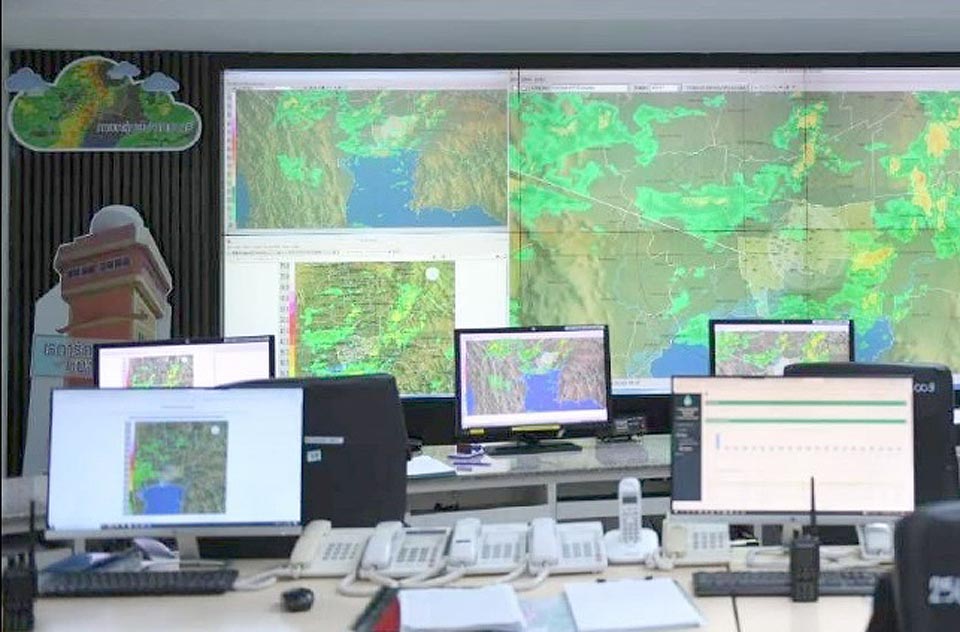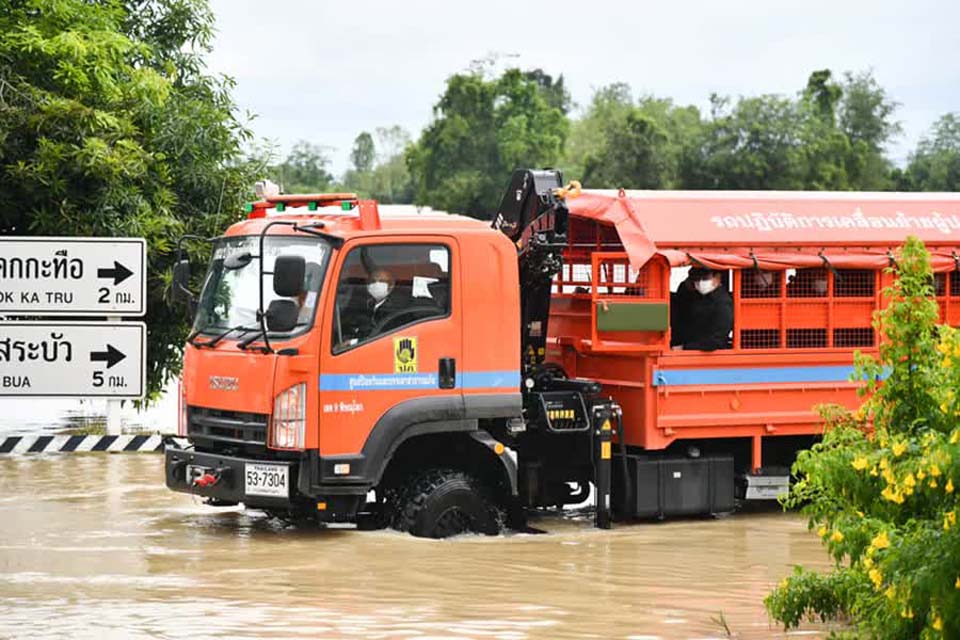
Dozens of provinces in upper parts of Thailand have been inundated after days of heavy rain from tropical storm “Dian Mu” which has moved along a monsoon trough causing more rain in the Northeast and the central regions.
While masses of water are flowing down to the central plains, Bangkok residents who vividly remember 2011 floods keep their fingers crossed. The government has assured residents that the water management plan in the lower central plain is better than 10 years ago, however, an expert has warned every unit to stay vigilant in October for more storms that are expected to bring more heavy rain and much more water.
Better Equipment and Better Plan
On September 29, after inspecting the situation in the northeastern province of Chaiyaphum where many villages have been inundated by meters of deep water, the Prime Minister Prayut Chan-o-cha said every unit was told to be ready, adding that water management plans and tools are in place to effectively deal with a possible deluge in the central plains.
Currently, the Royal Irrigation Department is pumping water into the fields to prevent masses of water flowing downstream onto the lower central plains. Nine paddy fields are designated to retain large amount of water so as to prevent flooding downstream, the PM said, and added that dozens of high power pumps are ready to help mitigate the flood situation in Ayuthaya province.
Earlier, the PM wrote on Facebook that from an assessment by state agencies, the water situation is not “worrisome”, and is unlike the 2011 floods.
He said the monitoring system under the national water management plan is already in place. This technology helps monitor water levels in large dams and reservoirs as well as predict rainfall. And it also helps in making appropriate decisions on whether to discharge dam water at a particular time.
A more efficient plan of flood mitigation for the lower part of the Chao Phraya River basin is also in place, PM said.

Master Plan on Water Resource Management
The national water management plan is a part of the draft 20-year Master Plan on Water Resource Management approved by PM Prayut’s cabinet on 18 June 2019, following a proposal by the Office of the National Water Resources.
All relevant agencies are using the master plan as a framework for their strategies and operational plans, while the Office of the National Water Resources is the key unit responsible for monitoring and assessing the effectiveness of the 20-year master plan. Water management to tackle floods by developing sustainable management of natural resources is one of the key objectives.
The National Water Command was set up to oversee the broad picture and quickly respond to any emerging flood risk. The latest developments in drought mitigation and water management projects in the Chao Phraya River Basin and the Eastern Economic Corridor (EEC) have been the top priority on the organization’s agenda since NWC started to operate last year.
Bangkok Braces for Possible Floods
The governor of Bangkok, Aswin Kwanmaung, on Monday ordered every unit to monitor the water level of the Chaopraya River and prepare water pumps, sand bags for possible flooding, and if the water rises to a critical level, people living along the river should be warned to prepare for an overflow.
Months earlier, preparations for this year’s rainy season started. The Bangkok Metropolitan Administration’s Department of Drainage and Sewerage began fixing flood protection barriers along the Chao Phraya River as well as Bangkok Noi and Maha Sawat canals. Sandbags have been put in areas where barriers have not been constructed.
Drainage tunnels and pumping stations in all 50 districts of Bangkok have been checked to make sure that the system is ready. Currently, there are four giant water tunnels that are ready for use in draining large quantities of water into the river. A fifth one is almost complete and is expected to be ready next year.
Closely Monitoring Situation in October
Dr. Seri Suparathit of the Rangsit University Centre on Climate Change and Disaster and Director of Energy for the Environmental Centre in an interview with a local media on Wednesday warned that it’s possible two storms could hit Thailand in October. Rainfall from these two monsoon storms might lead to bigger masses of water when compared to September.
Currently, the Chao Phraya dam which the largest water gate in the lower central plain, releases around 2,500 cubic meters of water per second, Dr. Seri noted. It is still far from 4,500 cubic meters per second in 2011 when Bangkok and other provinces of the lower plains were submerged in places.
He urged local units to closely monitor and be well prepared for masses of water in October when storms causing heavy rainfall in many parts of the country are projected to occur. (NNT)
 |
 |
 |





